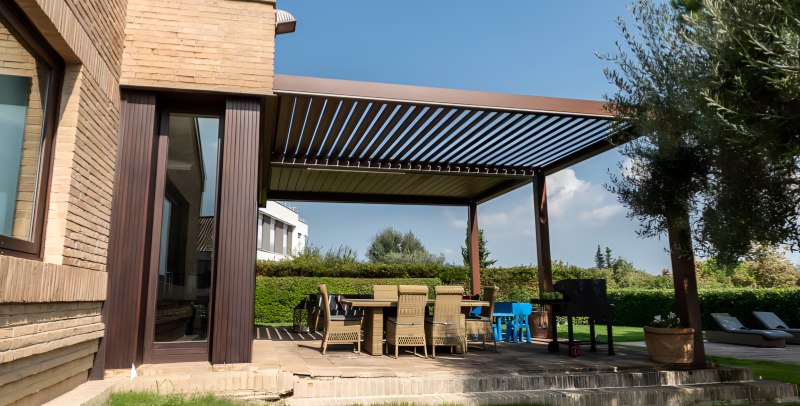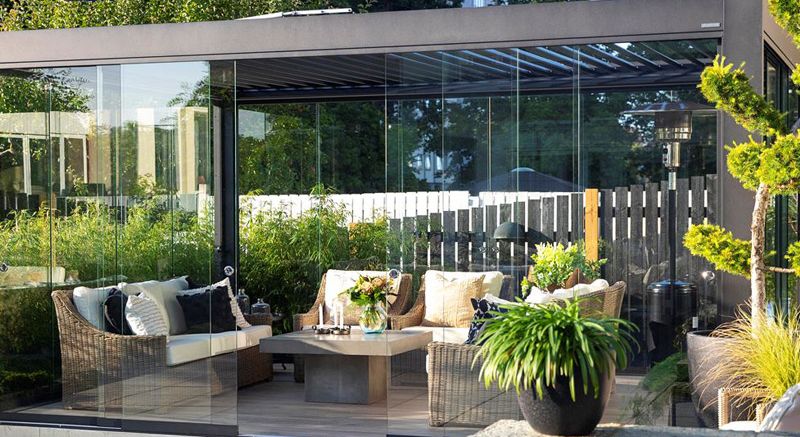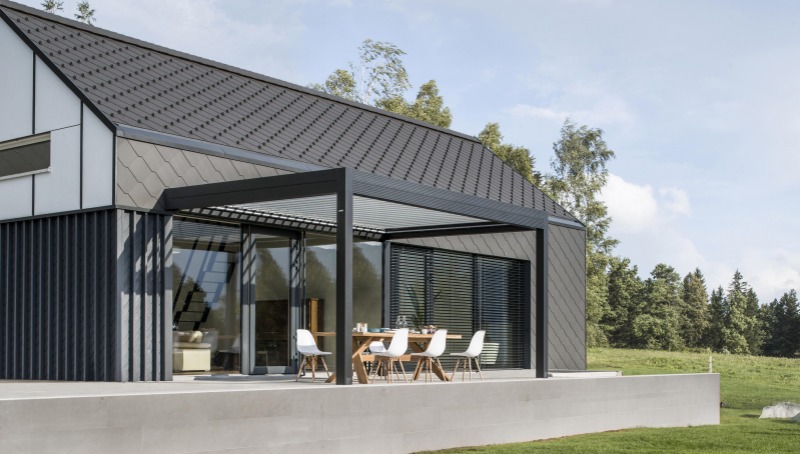
How to Build a DIY Aluminum Pergola: Essential Tools and Materials
2025-03-05Introduction
A pergola is a stylish and functional outdoor structure that enhances the aesthetics and usability of a patio, garden, or backyard space. Aluminum pergolas, in particular, have gained popularity due to their durability, low maintenance, and modern appeal. Unlike wood or steel, aluminum does not rot, rust, or require frequent painting, making it an excellent choice for a long-lasting pergola.
Building a DIY aluminum pergola is an achievable project for homeowners with basic construction skills. This guide will walk you through the benefits of aluminum pergolas, essential tools and materials, and a step-by-step building process to help you create your own stylish outdoor retreat.

Benefits of an Aluminum Pergola
1. Durability and Weather Resistance
Aluminum is naturally resistant to rust, corrosion, and pests, making it ideal for outdoor structures. It withstands harsh weather conditions such as rain, sun, and snow without deteriorating over time.
2. Low Maintenance
Unlike wood, which requires regular staining and sealing, aluminum pergolas need minimal upkeep. A simple wash with mild soap and water can keep them looking brand new for years.
3. Modern and Customizable Designs
Aluminum pergolas come in various designs and finishes, from sleek, contemporary styles to more traditional looks. Many feature powder-coated surfaces in different colors to match your home’s exterior.
4. Lightweight Yet Sturdy
Despite being lightweight, aluminum provides excellent structural integrity. It is easy to handle during installation yet strong enough to support additional features like retractable canopies, lighting, and climbing plants.
5. Cost-Effective Investment
Although the initial cost of aluminum may be higher than wood, its durability and low maintenance needs make it a cost-effective choice in the long run.
Planning Your DIY Aluminum Pergola
1. Choosing the Right Location
Before building, assess the space where you want to install the pergola. Consider the following factors:
- Sun and Shade: Decide if you want a pergola for shade or sun exposure.
- Surface Leveling: Ensure the ground is even to avoid structural instability.
- Building Codes and Permits: Check local regulations to ensure compliance with zoning laws and permits.
2. Determining Pergola Size and Design
The size of your pergola should complement your outdoor space. Common dimensions include:
- 8x8 feet – Ideal for a small patio or seating area.
- 10x10 feet – A standard size that fits most backyards.
- 12x12 feet or larger – Best for extensive outdoor living spaces.
Consider whether you want a freestanding pergola or an attached pergola connected to your house for additional support.
3. Creating a Blueprint or Sketch
A simple sketch or blueprint helps visualize your pergola’s layout. Include:
- Post placement and spacing.
- Roof slat orientation (horizontal or angled for shade).
- Additional features such as lighting or curtains.

Essential Tools and Materials
1. Tools Needed
- Measuring Tape & Level: Ensures precise dimensions and even alignment.
- Drill & Screws: Essential for securing beams and posts.
- Wrench & Screwdriver Set: Helps tighten bolts and brackets.
- Saw (if needed): Used for custom cuts on aluminum beams.
- Ladder & Safety Gear: Ensures safe installation, especially for overhead work.
2. Materials Required
- Aluminum Posts & Beams: Choose pre-cut or customizable lengths.
- Anchors & Brackets: Secure the structure to the ground or walls.
- Roof Panels (Optional): Can be slatted, louvered, or solid for added shade.
- Weatherproof Screws & Bolts: Ensures a secure and durable connection.
- Sealant & Paint (if needed): Provides additional protection and aesthetic customization.
Step-by-Step Guide to Building a DIY Aluminum Pergola
Step 1: Preparing the Installation Site
- Mark the desired area with stakes and string to outline the pergola’s footprint.
- Ensure the ground is level; if installing on a patio, confirm that the surface is solid and stable.
Step 2: Installing the Pergola Posts
- For Ground Installation: Dig holes (12-18 inches deep) for each post, secure with concrete, and allow it to set for 24 hours.
- For Patio Installation: Use mounting brackets to secure posts to concrete or deck surfaces.
- Check that all posts are level before proceeding.
Step 3: Attaching the Cross Beams
- Connect the horizontal beams to the posts using brackets and bolts.
- Ensure all beams are evenly spaced and secured tightly.
Step 4: Adding the Roof Structure
- Install slats or panels depending on your design preference.
- If opting for an adjustable louvered roof, follow manufacturer guidelines for proper setup.
Step 5: Securing and Finalizing the Pergola
- Tighten all bolts and screws to reinforce stability.
- Apply a weatherproof sealant if necessary.
- Inspect the pergola for any loose connections or uneven elements.

Customizing Your Aluminum Pergola
1. Adding LED or String Lighting
Enhance the ambiance by integrating waterproof LED strips or solar-powered string lights.
2. Installing Retractable Canopies or Curtains
For added shade and privacy, consider motorized or manual retractable canopies.
3. Incorporating Climbing Plants
Grow vines like wisteria or ivy to create a natural, green pergola cover.
4. Custom Paint or Powder Coating
Customize the pergola’s color to match your home’s exterior or garden theme.
Maintenance Tips for Longevity
1. Regular Cleaning
Wash the pergola every few months with mild soap and water to remove dirt and debris.
2. Checking and Tightening Bolts
Inspect screws and bolts regularly to ensure the structure remains secure.
3. Applying Protective Coatings
If needed, reapply a powder coat or protective sealant to maintain its finish.
4. Inspecting for Wear and Tear
Look for signs of damage, such as bent beams or loose connections, and address them promptly.
Conclusion
Building a DIY aluminum pergola is an excellent way to elevate your outdoor space while enjoying long-term durability and minimal maintenance. By carefully planning the size, location, and design, and following the step-by-step installation guide, you can create a stunning and functional pergola tailored to your needs.
Whether you want a cozy retreat, a shaded dining area, or a modern focal point in your backyard, an aluminum pergola is a worthwhile investment that enhances both aesthetics and functionality. Start your DIY project today and transform your outdoor space with a stylish, durable, and low-maintenance aluminum pergola!
